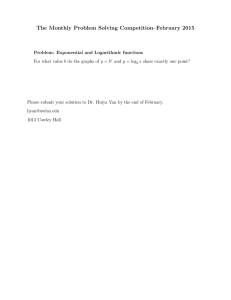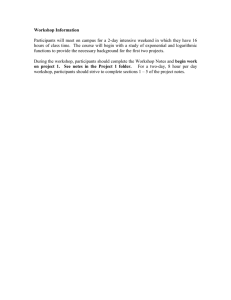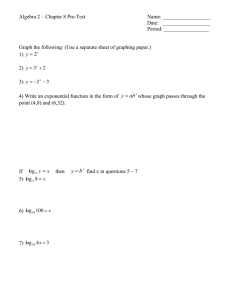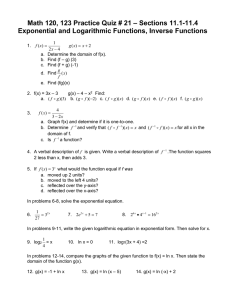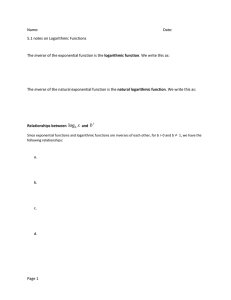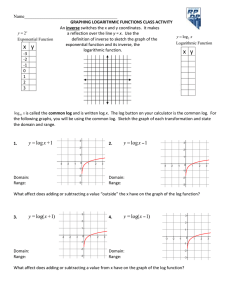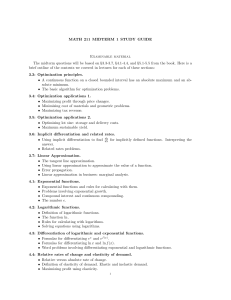Understanding Ln and ex
advertisement
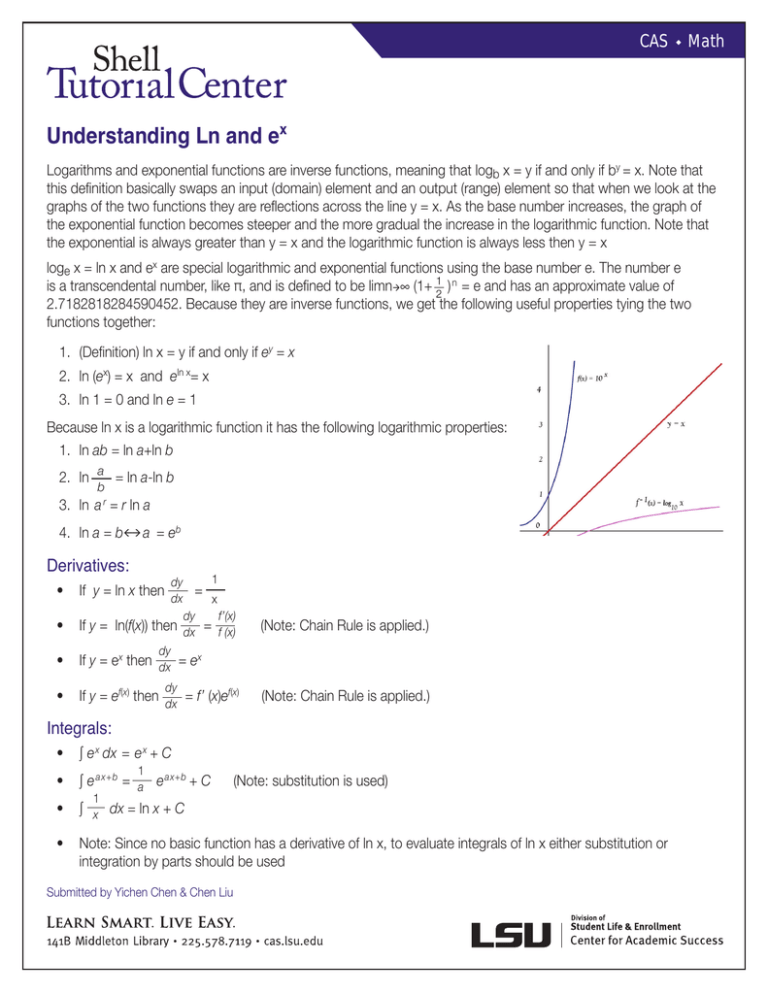
CAS w Math Understanding Ln and ex Logarithms and exponential functions are inverse functions, meaning that logb x = y if and only if by = x. Note that this definition basically swaps an input (domain) element and an output (range) element so that when we look at the graphs of the two functions they are reflections across the line y = x. As the base number increases, the graph of the exponential function becomes steeper and the more gradual the increase in the logarithmic function. Note that the exponential is always greater than y = x and the logarithmic function is always less then y = x loge x = ln x and ex are special logarithmic and exponential functions using the base number e. The number e is a transcendental number, like π, and is defined to be limnà∞ (1+ ) n = e and has an approximate value of 2.7182818284590452. Because they are inverse functions, we get the following useful properties tying the two functions together: 1. (Definition) ln x = y if and only if ey = x 2. ln (ex) = x and eln x= x 3. ln 1 = 0 and ln e = 1 Because ln x is a logarithmic function it has the following logarithmic properties: 1. ln ab = ln a+ln b 2. ln a b = ln a-ln b 3.ln a r = r ln a 4. ln a = bßà a = eb Derivatives: 1 dy • If y = ln x then dx = x dy f’(x) • If y = ln(f(x)) then dx = f (x) (Note: Chain Rule is applied.) dy • If y = ex then dx = ex • If y = ef(x) then dy dx = f’ (x)ef(x) (Note: Chain Rule is applied.) Integrals: • ∫ e x dx = e x + C 1 • ∫ e ax+b = a e ax+b + C 1 • ∫ x dx = ln x + C (Note: substitution is used) • Note: Since no basic function has a derivative of ln x, to evaluate integrals of ln x either substitution or integration by parts should be used Submitted by Yichen Chen & Chen Liu
